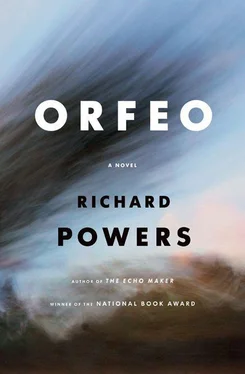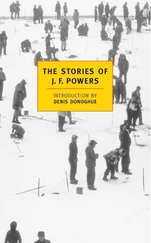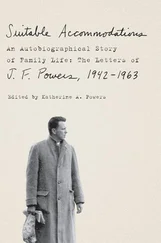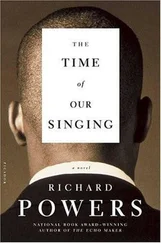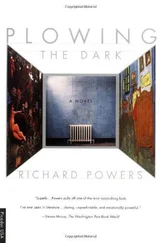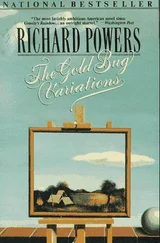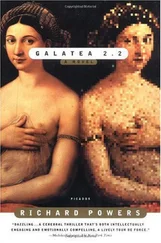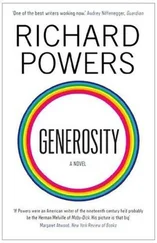All my life I thought I knew what music was. But I was like a kid who confuses his grandfather with God.
As he types, somewhere under a viaduct, in the hard rain of memory, other travelers wait for a ride.
Looking for millionaire wife. Good looking, Very handsome, Intelligent, Good bull thrower, Etcetera. You lucky women! All you have to do is find me, you lucky women. Name’s George.
Els tweets:
The key was futility. Music, pointless music for a while, will all your cares beguile.
He remains like this, leaning on the hood, tweeting, almost comfortable, almost at peace. Every minute he stays out here raises the risk of a state cruiser stopping and picking him up for vagrancy. But he’s charmed now, protected by the god of harebrained schemes.
A text arrives and fills his screen: The class wants to know if all this will be on the final exam. KK.
He smiles and sends off a reply: Believe it. Then another chorus of tweets, and he gets back in the car.
From Barstow he turns north into the Central Valley, up the length of the state where Partch once bummed rides and transcribed the speech of strangers into notebooks filled with hand-drawn staves. He heads north, toward the spot that once made Partch scribble down in ecstasy: In the willowed sands of the American River, within the city, I gaze up at the enthillion stars and bless the giver. And she shall be multiply blessed, for at every approaching dusk I shall thumb my nose at tomorrow . .
At nightfall, he orders huevos rancheros at a diner in a truck stop near Buttonwillow off of I-5. Word of mouth has pushed him over the thousand-follower mark. Readers retweet his messages. A comment posted under a feature on bioterrorism at a prominent news site is the first to announce the fact to a wider public: The biohacker Bach is improvising in public. Confessing to his crime.
All night long, discovery lights up in scattered nodes across the Net. A sound engineer calculates how many DNA base pairs it would take to encode five minutes of symphonic music. Someone uploads five minutes of old VHS footage from a performance of The Fowler’s Snare. A couple who live a mile from Peter Els’s house in Naxkohoman fall violently ill, and detail their symptoms in their blog. A mass email starts to circulate, with links to information on what to do if you suspect you’ve been exposed to Serratia marcescens. “Please send this information to anyone you think might need it.”
A journalist wonders out loud on his Facebook page whether @Terrorchord is in fact Peter Els or just another anonymous fear-artist aiming for a couple of minutes of power. A semi-prominent morals policeman posts an eloquent rant on how music has been taken over by frauds: “Music that can’t be read, played, or listened to: now I’ve heard everything.” The post starts sprouting contrarian comments within ten minutes. Two mathematicians debate how hard it would be to decode the base-four music and play it back. Someone reports that government scientists have already isolated and sequenced the variant strain, which contains a gene for multiple antibiotic resistance. A young woman composer describes having heard the file that Peter Els spliced into the genome — a piece for small ensemble that’s breakneck and free.
By morning in California, the lines are humming. An activist from Maine argues that anyone who has altered a living germ line so recklessly should be put to death. A law student argues that the tweets themselves are a form of terrorism, and that by current practice, the perpetrator can be held in indefinite detention without trial. Writers on an obscure new music zine decide that for the first time in years, someone is singing a whole new song.
Here’s wishing all who read this, if they can get a lift, and the best of luck to you. Why in hell did you come, anyway?
Els sleeps in the Accord, in a slot behind the rest stop north of Lost Hills. He dreams of bumdom, that bulwark of American art. In his dream, ordinary people chatter to each other, millions of massed solos, in pitches and rhythms so rich that no scale or notation can capture them. All night long, the orchestra of long-haul freight whipping up and down the interstate accompanies him.
He wakes and heads north. He can reach his daughter’s place by evening. There is no plan. There’s only that old hobo tune: Make me down a pallet on your floor. When I’m broken and I got nowhere to go.
Missing me one place, search another.
A man sits in his car in a roadside rest area and types into a phone. He writes: I started with a rhythm that said: “Move now. You’ll be holding still for a very long time.” Then he presses post.
He tells about a piece that he wrote, a melody from a time that speech can no longer reach. He types of harmonies spreading through the piece in long, self-replicating chains. The messages go out to satellites and back down to servers that send them all across the face of the planet.
He says what the piece sounds like: Like the porous edge between hope and fear. I tried to make my germ sound like the music I loved at sixteen, discovering a new monument every few hours. I tried to make it sound like a tune my five-year-old daughter once spelled out in colored blocks across the living room floor.
Every message, a melody. He tweets how he hired musicians, rehearsed and recorded the song for no one. Cars pull up next to his. People amble past his hood, suspecting nothing. They use the facilities. They buy lunch out of vending machines. They get back into their machines and drive away.
He goes on writing, of music converted into a string of zeros and ones, then converted again into base four. He writes of Serratia ’s chromosome ring, five million base pairs long. He tweets how he divided those two numbers to produce a short key. Of how he had that key custom-made for him. Nothing you can’t order online these days.
The account grows happy, almost prolific. All in short, joyous bursts about how he turned a living thing into a jukebox — a sequence of meaningful patterns to add to the ones scored by billions of years of chance. He presses a button and the message sets out into the biosphere, where it will live and copy itself for a while. He tweets of how he let his music go. Of how it’s spreading in the air all around, in the grout of your bathroom tiles. A tune you might be breathing in right now, one you’ll never be able to hear.
The tweets condemn him.
I left the piece for dead, like the rest of us. Or for an alien race to find, a billion years after we go extinct.
I haven’t a clue what the piece will do. Nothing, probably. Maybe you’ll forget the thing is even there. After all, it’s only a song.
I stop somewhere waiting for you.
The listener gets red and feels the beating sun. The listener gets blue and sees the sky. The listener gets green and sets out to sea.
Colors pour into the mobile concert hall. They come from the radio at first: Strings in a rocking sigh. A long sustain, the sound of the day ending. Nothing left to be frightened of; nothing left to discover. But seven chords in, a shimmer of horn, and on the next measure’s pickup, a soprano sings:
Amor mío, si muero y tú no mueres,
Amor mío, si mueres y no muero,
no demos al dolor más territorio. .
Love, if I die and you don’t,
Love, if you die and I don’t,
let’s not give sadness any more ground. .
The words meander like a languid river. But soon enough a swirl of unstable harmonies pushes the sound into a wider place. This music, half a dozen years old, could be a hundred. It’s shot through with Mahler at his most serene. The few dissonances it admits to are dappled and transient, as if the perfected terrors of the last century changed nothing, and even now, even in this year, home might still be intact, and nearer than you think.
Читать дальше
